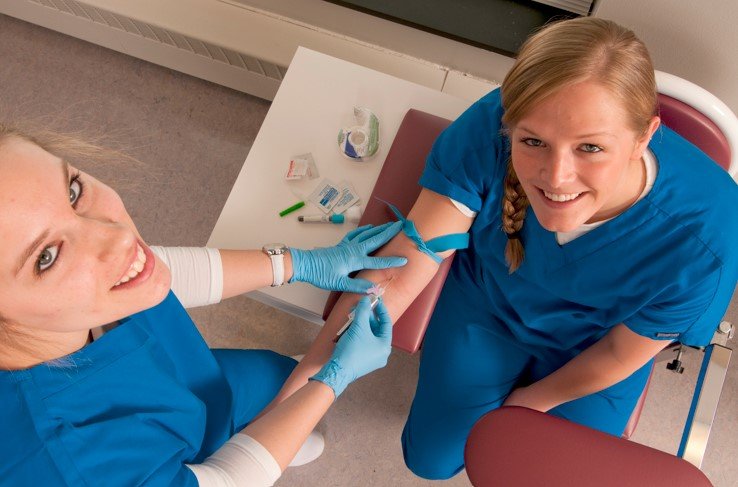Challenges in Integrating New Biopharmaceutical Products into Hospital Supply and Equipment Management Systems
Summary
- Hospitals face challenges in integrating new biopharmaceutical products into their existing supply and equipment management systems due to the specialized nature of these products
- Regulatory requirements and compliance issues pose obstacles to the seamless integration of biopharmaceutical products into hospital supply chains
- Cost considerations, inventory management, and staff training are key challenges that hospitals need to address when incorporating new biopharmaceutical products into their systems
Introduction
Hospitals in the United States are constantly striving to enhance patient care and improve outcomes through the use of cutting-edge medical technologies and pharmaceutical products. As the healthcare landscape evolves, hospitals are faced with the challenge of integrating new biopharmaceutical products into their existing supply and equipment management systems. Biopharmaceutical products, which are derived from living organisms, offer novel treatment options for a wide range of diseases and conditions. However, incorporating these products into hospital supply chains presents unique challenges that must be addressed to ensure seamless integration and efficient delivery of care.
Challenges in Integrating Biopharmaceutical Products
Specialized Nature of Biopharmaceutical Products
One of the primary challenges that hospitals face in integrating new biopharmaceutical products into their supply and equipment management systems is the specialized nature of these products. Unlike traditional pharmaceuticals, biopharmaceuticals are derived from living organisms such as bacteria, yeast, or mammalian cells. These products are highly complex and require stringent storage and handling protocols to maintain their efficacy and safety. Hospitals must invest in specialized infrastructure and training to ensure proper storage, handling, and administration of biopharmaceutical products.
Regulatory Requirements and Compliance Issues
Another key challenge in integrating biopharmaceutical products into hospital supply chains is navigating the complex regulatory landscape governing these products. Biopharmaceuticals are subject to stringent Regulations from agencies such as the Food and Drug Administration (FDA) to ensure their safety, efficacy, and quality. Hospitals must adhere to regulatory requirements related to storage, handling, labeling, and documentation of biopharmaceutical products to maintain compliance and patient safety. Failure to comply with regulatory standards can result in fines, penalties, and jeopardize patient care.
Cost Considerations
Cost considerations are a significant challenge for hospitals seeking to integrate new biopharmaceutical products into their supply and equipment management systems. Biopharmaceuticals are often expensive to develop and manufacture due to their complex nature and specialized production processes. Hospitals may face budget constraints and Reimbursement challenges when incorporating high-cost biopharmaceutical products into their formularies. It is essential for hospitals to conduct cost-effectiveness analyses, negotiate favorable pricing contracts with manufacturers, and explore Reimbursement strategies to ensure financial sustainability while providing access to innovative biopharmaceutical therapies for patients.
Inventory Management
Effective inventory management is essential for hospitals to successfully integrate biopharmaceutical products into their supply chains. Hospitals must optimize inventory levels, track expiration dates, and monitor usage patterns to prevent stockouts or overstocking of biopharmaceutical products. Implementing inventory management technologies such as automated tracking systems, barcoding, and RFID can help hospitals streamline their Supply Chain operations and enhance visibility into product availability. By leveraging data analytics and forecasting tools, hospitals can improve inventory accuracy, reduce waste, and ensure timely access to biopharmaceutical products for patient care.
Staff Training and Education
Staff training and education are critical components of integrating biopharmaceutical products into hospital supply and equipment management systems. Healthcare professionals responsible for handling and administering biopharmaceuticals must receive comprehensive training on product characteristics, storage requirements, preparation techniques, and adverse event management. Hospitals should invest in ongoing education and competency assessments to ensure staff proficiency and compliance with best practices in biopharmaceutical management. By equipping Healthcare Providers with the necessary knowledge and skills, hospitals can enhance patient safety, optimize product utilization, and maximize clinical outcomes.
Conclusion
In conclusion, hospitals in the United States face several challenges in integrating new biopharmaceutical products into their existing supply and equipment management systems. The specialized nature of biopharmaceutical products, regulatory requirements, cost considerations, inventory management, and staff training are key hurdles that hospitals need to overcome to ensure successful integration and delivery of care. By addressing these challenges proactively and collaboratively, hospitals can leverage the potential of biopharmaceutical products to improve patient outcomes, enhance operational efficiency, and drive innovation in healthcare delivery.

Disclaimer: The content provided on this blog is for informational purposes only, reflecting the personal opinions and insights of the author(s) on the topics. The information provided should not be used for diagnosing or treating a health problem or disease, and those seeking personal medical advice should consult with a licensed physician. Always seek the advice of your doctor or other qualified health provider regarding a medical condition. Never disregard professional medical advice or delay in seeking it because of something you have read on this website. If you think you may have a medical emergency, call 911 or go to the nearest emergency room immediately. No physician-patient relationship is created by this web site or its use. No contributors to this web site make any representations, express or implied, with respect to the information provided herein or to its use. While we strive to share accurate and up-to-date information, we cannot guarantee the completeness, reliability, or accuracy of the content. The blog may also include links to external websites and resources for the convenience of our readers. Please note that linking to other sites does not imply endorsement of their content, practices, or services by us. Readers should use their discretion and judgment while exploring any external links and resources mentioned on this blog.

